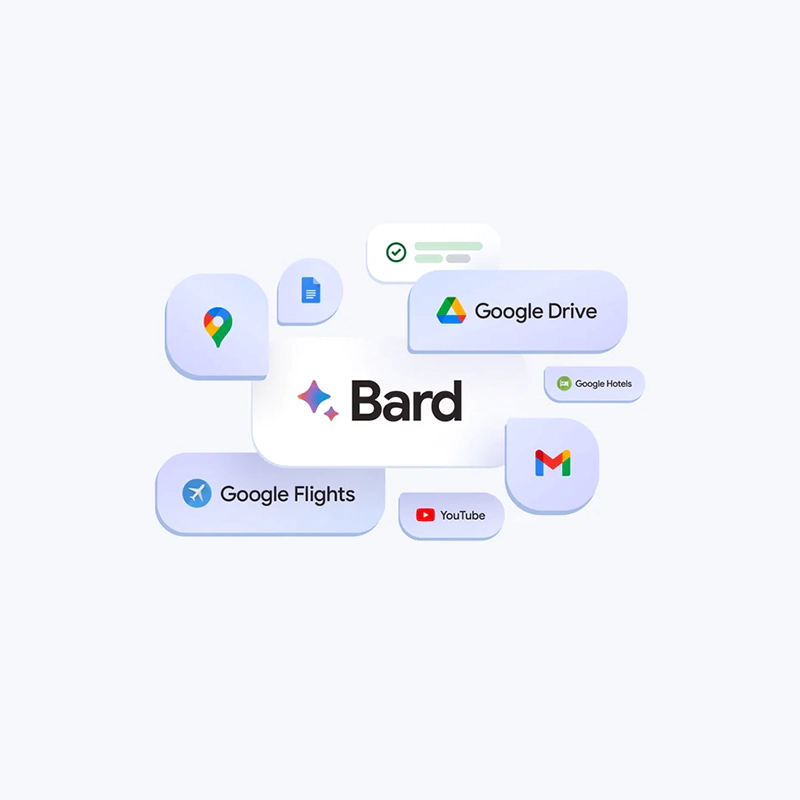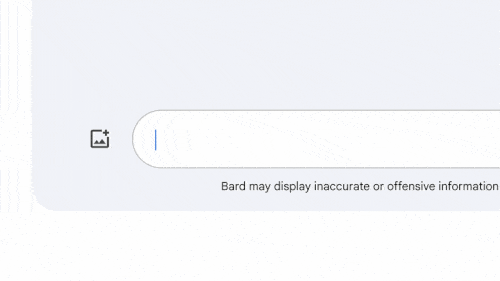
The AI field was dull and mostly quiet. Most of the buzz it created was mostly contained, and happened only within its own field.
But when OpenAI introduced ChatGPT as an AI chatbot tool, the internet was quickly captivated. This is because the AI is able to do a wide range of tasks, including writing poetry, technical papers, novels, and essays.
When Google announced Bard, the AI should be superior to ChatGPT, because at that time, Bard was allowed to learn from the internet, whereas ChatGPT's knowledge was limited to things that are up to 2021.
Google failed however. And because the botched launch, Bard effectively wiped around $100 billion off the firm's market value.
And later, after finally releasing Bard, and made updates and improvements, including generating and debugging codes, improving it in math and string manipulation, Google readies itself for the next step.
And that step is obvious, and has long been predicted.
This is because Google finally brings Bard's generative AI capabilities a tool to help users throughout Google's many apps and services.
Bard just got even better. Learn more about how these new features can help you create, explore and get things done ↓ https://t.co/Sg1AXhoynv
— Google (@Google) September 19, 2023
In a blog post, Google said that:
"Today we’re rolling out Bard’s most capable model yet. Bard now integrates with Google apps and services for more helpful responses."
Google introduced this through Bard Extensions in English.
With Extensions, Bard can find and show users relevant information from the Google tools they use - like from Gmail, Docs, Drive, Google Maps, YouTube, and Google Flights and hotels - even when the information they wish to seek is spread across multiple apps and services.
We’re adding extensions to Bard so you can connect it to your favorite Google apps including Gmail, Drive + Docs for even deeper collaboration. We’re also updating how we validate the claims in Bard’s responses with an improved “Google It” button + more.https://t.co/whwuXoicS2 pic.twitter.com/63oEtucxTZ
— Sundar Pichai (@sundarpichai) September 19, 2023
For example, in the past, users who wish to plan for a trip through various Google apps and services, have to open a few tabs and apps.
But this time, all users have to do, is launch Bard, and tell it to come up with an itinerary.
With the update, Bard can find the dates that suit everyone from Gmail, look up real-time flight and hotel information, see Google Maps directions to the airport, and even watch YouTube videos of things to do there — all within one conversation.

Then, Google said that users can use Bard's "Google it" button to double-check answers.
It has been publicly known that generative AIs can hallucinate and make things up out of thin air, and say the misinformation in a very convincing manner.
With this feature, users clicking on the "G" icon will have Bard evaluate whether there is the content across the web to justify its answers.
"When a statement can be evaluated, you can click the highlighted phrases and learn more about supporting or contradicting information found by Search," said Google.
Google is also making it easier to build on others’ conversations with Bard.
And lastly, Google also said that it has applied its state-of-the-art reinforcement learning techniques to train Bard to be more intuitive and imaginative.
"So, whether you want to collaborate on something creative, start in one language and continue in one of 40+ others, or ask for in-depth coding assistance, Bard can now respond with even greater quality and accuracy," said Google.
This is possible because of the updates it made to its PaLM 2 model.
Bard just got even more capable at solving coding problems!
Collaborate with Bard to generate, explain, and debug code in 20+ coding languages with greater quality and accuracy, thanks to our most capable model yet.
Give it a try → https://t.co/I6v03JXKxT pic.twitter.com/8b6McyWFT9— Google for Developers (@googledevs) September 19, 2023